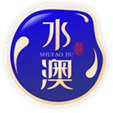Tips on tasting Maotai flavor Baijiu
2021-08-18
To appreciate Maotai flavor Baijiu, first of all, we should understand what types of Maotai flavor Baijiu are currently on the market, which can be roughly divided into these categories: channeling liquor, turning sand, bran koji sand, Daqu sand, and Daqu Kunsha. During this period, the worst liquor can also be referred to as fake liquor, which is usually sold online for around 9.9 yuan.
The brewing process of sauce flavored liquor
Chanjiu can be divided into three categories. The first category is called Shengchan, which uses essence, spices and alcohol to blend the sauce flavor, with the lowest cost, so it can be delivered for nine yuan and nine packets. The second type is called "cooked liquor", which is a sauce liquor made by steaming the fermented grains of sauce flavored liquor with alcohol. The third type is called mixed liquor, which is made by blending the six or seven order liquor in sauce wine brewing with alcohol.
Fansha liquor is a type of liquor made by adding some new sorghum and koji medicine to the discarded lees after the 9th cooking process of Kunsha technology. The production cycle is short, the yield is high, but the quality is poor.
Gluten koji and crushed sand are made from wheat husks and saccharifying enzymes, and the grains are crushed and distilled to obtain the liquor.
Daqu can be divided into high temperature Daqu, medium temperature Daqu and low temperature Daqu. It is made from barley, wheat and other raw materials. Different styles of Baijiu can be fermented from different temperatures, Baijiu with sauce flavor can be fermented from high temperature Daqu, Baijiu with luzhou flavor can be fermented from medium temperature Daqu, and Baijiu with light flavor can be fermented from low temperature Daqu.
Daqu crushed sand is the process of using Daqu fermentation and distillation to extract liquor after crushing grains. Breaking grains can improve the output value of liquor and shorten the brewing cycle.
Daqu Kunsha refers to the fermentation of Daqu with intact grains, and "Kun" means intact grains. "Sha" in Guizhou dialect refers to grains. The Kunsha craft has a low yield and a long brewing circumference, which determines the high price of Daqu Kunsha liquor. In Kunsha technology, 12987 refers to making koji once, adding grain twice, steaming nine times, fermenting eight times, and extracting wine seven times.
02 Features of different types of Maotai flavor Baijiu
The main characteristic of Gan liquor is that it has a strong alcoholic taste at first smell and quickly evaporates. After being left for a while, the taste becomes lighter. After being imported, the taste becomes single, and the newer the wine is, the better it feels. The longer it is left, the harder it becomes to drink.
The aroma of bran koji and crushed sand is stuffy, with a taste of wheat bran and a sense of raw food.
Daqu Crushed Sand Wine smells like koji, and it is relatively clean and free from any harmful odors when imported. Its characteristic is a sweet aftertaste, also known as a sweet aftertaste.
Daqu Kunsha liquor is slightly sour and astringent when imported, with an outstanding sauce flavor and a strong burnt paste flavor. It stays fragrant in the mouth for a long time.
03 Common Daqu Kunsha Liquor
The best Kunsha liquor, Maotai, deserves it. Maotai liquor has an outstanding sauce aroma, a strong burnt sensation, and a mixed floral and fruity roasted aroma. After being imported, it can linger in the mouth for up to 18 seconds, with a true sauce aroma that permeates and is rich and poetic.
Another good Daqu Kunsha liquor is the Sichuan sauce representative of Qinghualang. The main feature of this liquor is its outstanding grass aroma on the nose. And the unique and tempting burnt aroma of Diaoyutai's flagship sauce wine, while Zhen 30's flagship imported clean and refreshing, all soft, without outstanding features but also without any shortcomings.
Related news


